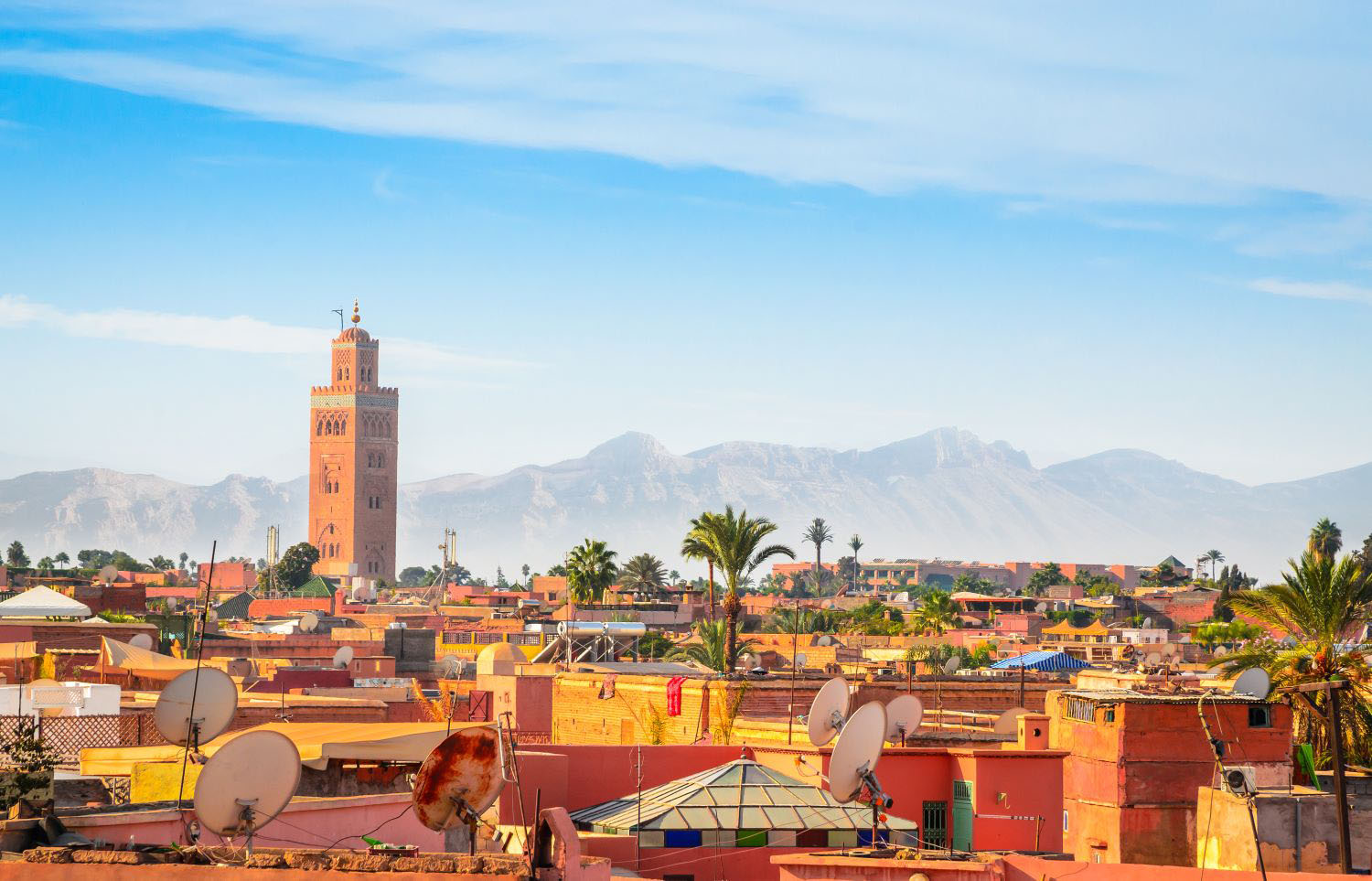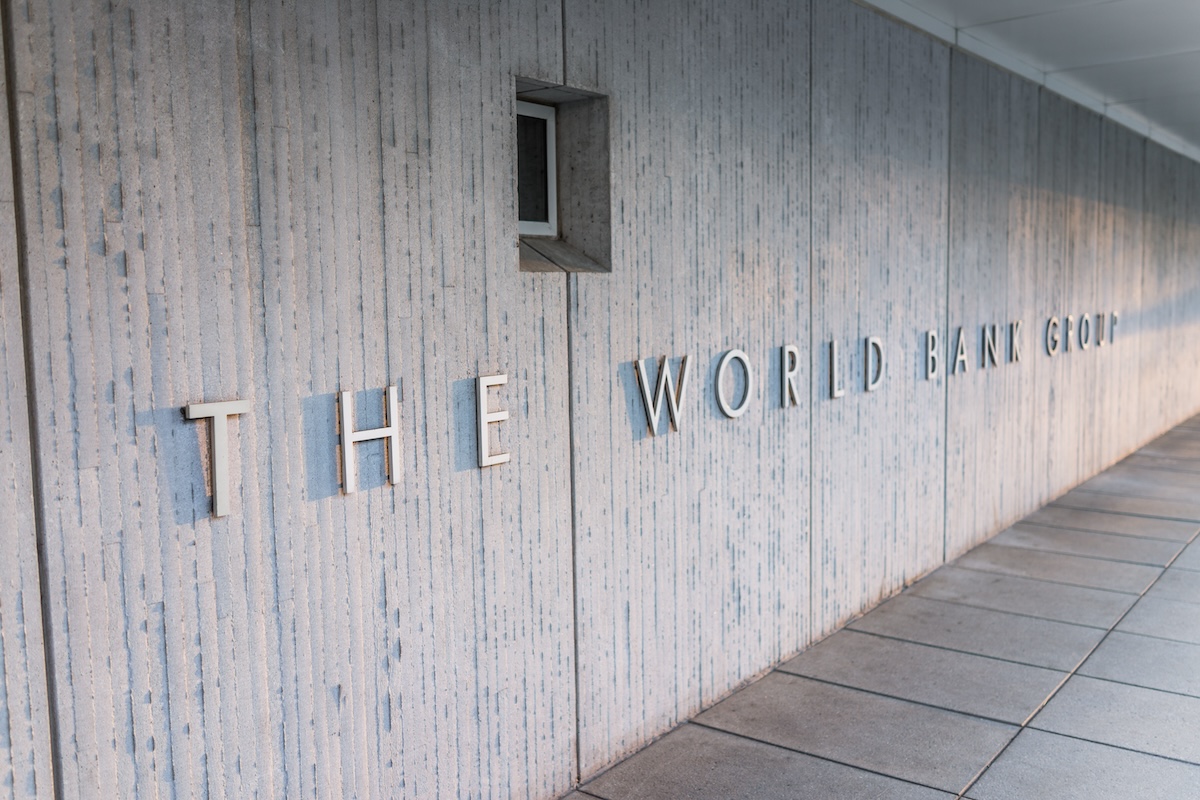Recommended

At the urging of shareholders, the World Bank has pulled together a set of reform proposals to broaden the World Bank Group’s mission, stretch its balance sheet, and strengthen its impact. These are laid out in the Evolution Roadmap, which will feature heavily during the annual meetings next week in Marrakesh. The last exercise with comparable objectives was the Forward Look - A Vision for the World Bank Group in 2030, which was approved in 2016 and helped inform the reform agenda for the general capital increase in 2018. Heading into the annual meetings, we looked at both documents to assess whether the Evolution Roadmap represents a fundamentally new direction for the World Bank, or a continuum of the path set by the Forward Look (or more accurately, the Backward Look). (See table 1 below for a side-by-side comparison.)
Broad continuity on major priorities…
Overall, we found a substantial overlap in priority areas, including operational efficiency, World Bank Group (WB) collaboration, private sector mobilization, partnerships, client engagement, and the global public goods agenda. The Evolution Roadmap offers more detail than the Forward Look but nevertheless the level of ambition in most categories is modest. There is a lot of intent embedded in the Roadmap but not much in the way of measurable targets to assess success. This is evident in Annex 1, which includes an extensive list of deliverables for doubling down on impact through a new World Bank playbook. Examples include plans to “engage” the private sector more, including through the Private Sector Lab, “explore engaging” insurance markets to cover exposure to IBRD guarantees, “explore” MIGA or IBRD/IDA guarantee products to refinance IBRD loans; and “explore” launching a private to sovereign climate financing fund.
There are also concrete actions, including plans to establish a rapid response option to support emergencies, pilot climate resilient debt clauses for vulnerable countries, and develop a partnership charter for working with other multilateral development banks (MDBs).
Where the two documents diverge most is in the Roadmap’s focus on a global challenges agenda. The Roadmap proposes to add “in a livable planet” to the World Bank’s existing twin goals (eradicating extreme poverty and boosting shared prosperity), and has identified eight global challenges to be part of this new mandate (climate/adaptation, fragility and conflict, pandemic prevention, energy access, food security, water security, digitalization, and protecting biodiversity and nature). This move has significant implications both for operations and client engagement. It also represents a philosophical departure from the Forward Look.
… but different views on client focus
In the Forward Look, shareholders reaffirmed the World Bank’s focus on the poorest countries and fragile and conflict states and committed to a greater focus on lower middle-income countries especially recent IDA graduates. The rationale was that development finance should predominantly be channeled to poorer countries with limited alternative funding sources. The 2018 general capital increase carried this forward by introducing differentiated lending terms for IBRD clients based on income category (i.e., high and upper-middle income countries would pay slightly higher prices for loans than countries at the lower end of the spectrum).
This principle is absent in the Evolution Roadmap; by contrast, there is significant emphasis on more engagement with middle income countries (read: big emitters). This includes introducing concessional terms for IBRD clients to incentivize borrowing for “global challenges.” The untested premise is that for the World Bank to make a meaningful dent in reducing global emissions, it will need to up its mitigation financing for major emitters, many of which are upper-middle income countries.
When the Forward Look was issued, management also assumed that a “large number” of IDA countries would be graduating to IBRD and current IBRD borrowers would move up the income ladder. But in fact, no countries have graduated since the Forward Look was approved and one graduate—Sri Lanka—is again IDA-eligible. In addition, the economies of many IDA borrowers
have deteriorated due to a combination of external shocks (e.g., COVID, rising food and fuel prices, increased severity and frequency of natural disasters) and rising debt burdens, with 21 countries in Sub-Saharan Africa at high risk of or currently in external debt distress. The World Bank has warned that the region is facing a lost decade of growth, which is projected to reach only 2.3 percent in 2023, declining for the second consecutive year.
Our take
In a world where development finance is scarce and needs are exorbitant, the new vision in the Evolution Roadmap (more and cheaper financing for global challenges) versus the Forward Look (more and cheaper financing for poorer countries) could lead to a very different set of priorities. Critically, how the World Bank will mobilize fresh grants at scale for MICs remains an open question. The Evolution Roadmap recognizes that the levels of grant and concessional finance offered by financial intermediary funds and trust funds are insufficient and proposes to ask donors to help capitalize the global public goods fund. Despite the paper being categorical that “increasing concessionality for clients in IBRD-eligible countries must not be at the expense of IDA countries,” this outcome seems likely given that 2024 is an IDA replenishment year.
Table 1. Side-by-side comparison
The second and third columns are our summaries of the key reforms outlined in each document, and the fourth is our assessment of how evolutionary the latest proposals really are.
| Issue | Forward Look | Evolution Roadmap | Our assessment |
|---|---|---|---|
|
Global public goods / challenges |
• WB commits to leading on the global public goods agenda including international financial architecture, environment and climate, communicable diseases, and trade. • WB commits to robust implementation of the Climate Change Action Plan |
• WB proposes adding “livable planet” to twin goals. • WB proposes eight global challenges: (i) Climate Change Adaptation and Mitigation; (ii) Fragility and Conflict; (iii) Pandemic Prevention and Preparedness; (iv) Energy Access; (v) Food and Nutrition Security; (vi) Water Security and Access; (vii) Enabling Digitalization; and (viii) Protecting Biodiversity and Nature. • WB will launch a Global Challenges Program to support this new agenda. • WB affirms that concessional financing will be essential to tackle global challenges and proposes five principles for a new concessional framework for IBRD borrowers. |
This is the most ambitious category, as it aims to formally establish the WB as a leader on the global challenges agenda. What remains unclear is what exactly this means for client engagement and resource allocation—especially for IDA countries. In terms of institutional arrangements, no proposals are put forward as to whether the global challenges agenda will be incorporated into the current IBRD balance sheet or under a separate facility. The concessional framework has yet to be negotiated and—critically—it is not clear where the funding will come from. |
|
Crisis response |
• WB commits to increase its focus on strengthening its crisis response, which includes broadening work with the insurance industry and creating new market instruments, enhancing the IDA Crisis Response Window, and improving internal coordination. • The WB commits to helping countries identify and mitigate risks and to develop resilience through the Global Crisis Response Platform. |
• The WB agrees to provide greater access to rapid response support when crises occur, including through increased contingent financing, rapid access to a portion of undisbursed balances in a country’s existing portfolio of IBRD or IDA financing through a new Rapid Response Option, and catastrophe bonds embedded in IBRD or IDA operations and/or new parametric and other catastrophe insurance options. • The WB will include Climate Resilient Debt Clauses (CRDC) in loans to countries most vulnerable to natural disasters. |
The introduction of the CRDC clause is the most significant new initiative in this category. The WB first became active in the cat bond market in 2009 and uses them regularly so it’s not clear how much of an impact the proposal to embed them in operations will have. What is really needed now is a scaling up of IDA’s crisis response facility, which is dependent on donors. IDA is fundraising for the facility until December 2023, but is unlikely to raise a meaningful sum. |
|
Partnerships |
• WBWB will continue to forge collaboration with partners, as today’s development context demands. |
• WB will develop a Partnership Charter that will articulate principles for establishing and working in partnerships including cost-sharing. • WB will create better incentives to partner by establishing framework and contracting arrangements, increasing communications, and improving reporting on partnerships. • WB will engage with partners more actively at the country level, especially FCS. • WB will explore engagement with regional and global organizations and supra-nationals to help set and implement international standards. |
President Banga appears serious about deepening partnerships with other MDBs—he recently concluded a memorandum of understanding with the Inter-American Development Bank and is pursuing similar arrangements with the African Development Bank and the Islamic Development Bank. It will be important that the partnership charter, once done, feeds into a strategy document with goals and targets. Otherwise, it will be hard to measure success. |
|
Private sector mobilization |
• WB commits to leverage the full range of its capabilities to expand and create markets where private capital has been less forthcoming. • WB will partner with institutional investors, including pension funds, insurance companies, and sovereign wealth funds. • WB will improve systematic coordination of upstream policy, institutional and regulatory reform and IFC/MIGA capacity to structure and demonstrate private sector solutions in new areas. • WB will scale up mobilization through strengthening internal coordination mechanisms, aligning incentives, exploring new and strengthening existing instruments and fostering relations with a wider group of institutional and private investors. • WB commits to link IFC’s transactional / advisory work to the Bank’s policy reform capabilities and leverage the Bank’s policy work with countries to support private sector engagement. • Country Partnership Frameworks and Joint Implementation Plans will include a clear articulation of IFC / private sector asks on reforms. |
• WB will help identify concrete policy interventions and provide the basis for policy reform. • WB will aim to enable and mobilize private capital, ensuring that private sector finance and solutions are pursued whenever possible as first-best options, and using scarce public sector resources only when necessary and justified. • An updated Country Private Sector Diagnostic will help identify concrete policy interventions and provide the basis for policy reform dialog with governments. • The WB has set up a new Private Sector Investment Lab to identify solutions to increase private investment in developing countries. • IFC’s Warehouse-Enabled Securitization Platform will support greater private capital mobilization in Paris-aligned impact loans and pioneer an originate-to-distribute model for participating MDBs. • IBRD is exploring a Private to Sovereign Climate Financing Investment Fund to mobilize private capital from institutional investors for green public projects. |
The World Bank created expectations under its “billions to trillions” agenda, which aimed to use official capital to leverage private capital many times over. The results have been disappointing—at best mobilization rates tend to be 1:0.7. The Roadmap’s initiatives to advance private sector development are all well and good but they fail to address long-standing concerns including lack of origination capacity and risk aversion. Moving the needle will require taking these internal cultural issues head on and setting clear targets. We also think some expectations management is needed – billions to trillions was a purely theoretical prospect and evidence to date suggests it may simply be unrealistic. |
|
One World Bank |
• WB will build capacity, both at IFC and the Bank, to develop integrated policy objectives and, along with MIGA, to align operational responses with those objectives. • WB will scale up mobilization through strengthening internal coordination mechanisms, aligning incentives, exploring new and strengthening existing instruments, and fostering relations with a wider group of institutional and private investors. |
• WB commits to increasingly work as One World Bank through purposeful collaboration, coordination, and deployment of collective knowledge and instruments. • This approach will start early in the country engagement process, through joint diagnostics and One World Bank engagement with governments to determine priorities and coordinate programming wide metrics will be developed • A pilot is under consideration for One World Bank country representation to better coordinate country engagement and offer clients optimal public and private sector solutions and instruments. • The WB will consider an awards program to encourage development of “One World Bank” programs (e.g., joint financing initiatives between IDA, MIGA and IFC. • WB will develop a new World Bank coordination and innovation center to develop joint guarantee products that can be supported by MIGA, IFC, or IBRD/IDA guarantee operations. |
The One World Bank concept was a major priority of former President Jim Kim and adopted in the 2013 World Bank Group Strategy. There were a lot of growing pains that manifested as clashes between IBRD/IDA and IFC in particular, including over conflict-of-interest issues (e.g., where the public sector objectives differed from IFC aims). The Roadmap needs more clarity on how the WB will address these issues. As part of this initiative, the WB should also begin tracking joint projects. We like the idea of the guarantee facility, but it needs to include other measures to encourage their uptake. For example, most guarantees are counted against country borrowing limits on a one-to-one basis and sovereign guarantee exposure is counted the same as loan exposure in country finance allocations, both of which discourage their use. |
|
Client engagement |
• WB affirms that its main focus remains on the poorest countries, relying on strong support from its membership through IDA, with particular emphasis on countries affected by fragility, conflict, and violence (FCV) and small states. • The WB commits to build up the IBRD portfolio for LMICs, including IDA graduates, by significantly increasing lending going to LMICs over the next decade. • WB affirms that LMICs face the greatest challenges in achieving the twin goals and accessing capital for their sustainable development needs and are the least able to withstand external shocks. • WB agrees to expand the product offer for upper middle-income countries beyond financing, including joint efforts with IFC on mobilizing domestic institutional capital and more use of reimbursable advisory services, guarantees, and tailored financing instruments. |
• WB is adding focus on knowledge through new Knowledge Compact for Action which will draw on country, regional, and global knowledge to respond to challenges at the country level. • The country engagement process will no longer include the Systematic Country Diagnostics as a standalone prerequisite of a Country Partnership Framework but will draw on a synthesis of a multiple products, including a climate country and development report and the poverty and equity assessment. • The WB will work at the subnational level to better support municipalities, state/provincial governments, and subnational utilities to strengthen policy/regulatory capacity, enhance creditworthiness. • The World Bank will build on existing mechanisms to increase financing for clients in IBRD countries, in partnership with donors. This effort would focus on trust funds, FIFs, and partner co-financing with IBRD/IDA, as well as augmenting the existing GPG Fund. • The WB will assess opportunities to provide support via the Global Public Good Fund for regional operations in IBRD countries. |
A key concept animating the Forward Look was the importance of targeting scarce development finance to the countries that need it most. On the IBRD side, that meant pushing a greater portion of resources to its poorer clients with less ability to self-finance. The Roadmap is more focused on incentivizing the entire client base across the income spectrum to borrow for different types of projects, especially climate and global public goods. The visions are similar in seeing knowledge as a centerpiece of the World Bank offer. It’s unclear how the knowledge compact will carry this agenda forward and how it differs from Jim Kim’s vision for the Global Practices. |
|
Operational effectiveness |
• The WB will implement its new “Agile Bank” initiative, which is intended to shift mindsets and behaviors to become faster and less bureaucratic, while upholding standards. • WB aims to set staff incentives to ensure focus on the scale of impact, working across WB, mobilizing private, partner, and domestic resources. • WB commits to reforming the trust funds framework and strengthening knowledge. • WB highlights the FY17-19 People Strategy, which will strengthen the WB’s ability to deploy staff skills flexibly and where they are needed most (for example, on FCV). • The WB agrees to focus on the “employment value proposition” and reinforce the behaviors required to be successful (such as performance management, diversity, and incentives). |
• WB acknowledges concerns about the pace of operations due to capacity constraints in client countries, especially FCS, World Bank bureaucracy and risk-aversion. • WB plans to ensure that operational approaches, instruments, and tools “achieve speed and impact.” • Change measures will align with five guiding principles: (i) build country capacity to strengthen institutions and systems; (ii) move from retail to wholesale by offering clients scalable and programmatic approaches informed by the best global and country knowledge; (iii) apply a risk-based approach to project preparation, approval; (iv) foster a culture of partnership and trust so all internal and external parties appreciate the mutual benefits of working together, re-aligning incentives, and changing behaviors; and (v) focus on staff welfare and productivity as we change the way we work. |
Complaints about delays and inefficiencies in WB project development and implementation are long-standing. We can’t effectively assess the five “change” principles until they lead to “change” measures. The proposal to apply. However, improving speed of delivery will be hindered by the fact that the WB has extensive due diligence requirements, including on financial integrity, procurement, environmental and social safeguards, all of which are highly valued by many shareholders (donor countries especially). |
Disclaimer
CGD blog posts reflect the views of the authors, drawing on prior research and experience in their areas of expertise. CGD is a nonpartisan, independent organization and does not take institutional positions.






